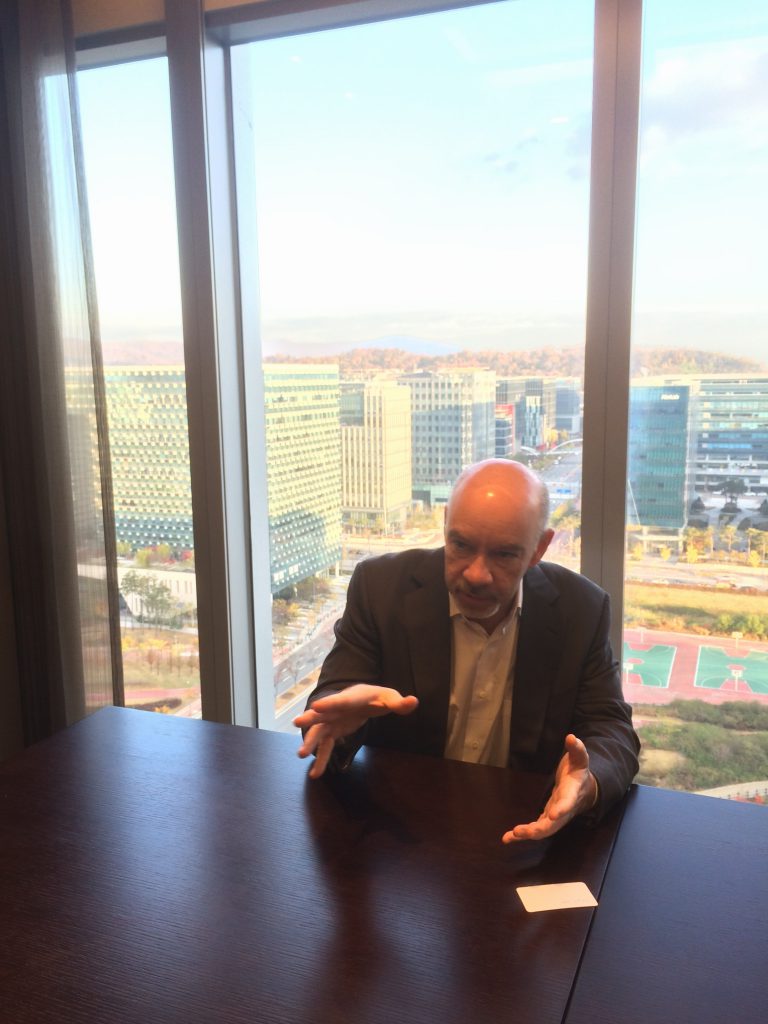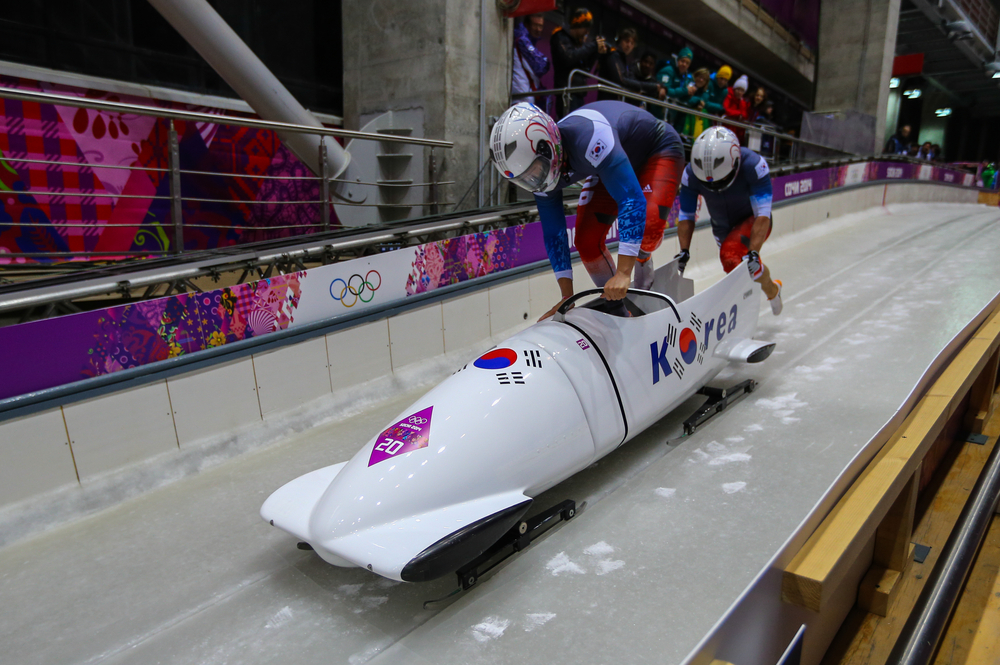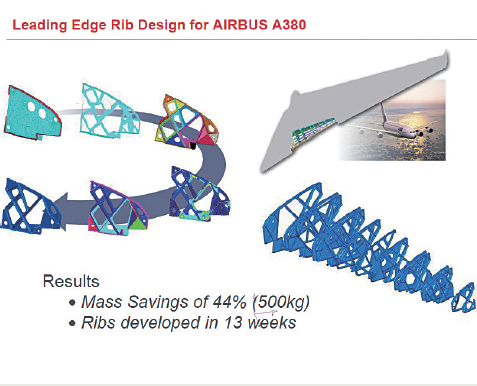CAE and the Future of Manufacturing
This blogpost appears courtesy of Dong-A Business Review. It is a translation of an article that was originally published in Korean. You may view it here.
Innovation
"CAE, as a simulation technology, is an innovation that is leading the way toward the future of manufacturing." - Jim Scapa, Altair CEO, during a recent visit to Korea.
Computer-aided engineering (CAE), a simulation technology, is an innovative method that is leading the way toward the future of manufacturing. It can be applied "before" and "after" the product development stage. When combined with topology optimization, an approach involving mathematical algorithms to arrive at optimal shape structure, CAE can simultaneously reduce development time and save cost. The most efficient design is selected in consideration of space constraints. Moreover, by coupling simulation with optimization, it is possible to obtain creative and innovative design ideas that were previously inconceivable.
Scapa studied Mechanical Engineering at Columbia University, then completed a Master's Degree in Business Administration at the University of Michigan. He founded Altair in 1985 after working as an engineer at Ford Motor Company. Today Ford, GM, Airbus, Alstom, BASF, IBM, Exxon Mobil, and NASA are all significant Altair customers. Scapa discussed the potential of CAE for manufacturing during his recent visit to Korea.
Why is CAE important?
Let's use bobsledding as an example; it is a competitive winter sport. It is necessary to design the sled's exterior to minimize air resistance in order to increase the running speed of the bobsled. As a result, the sled is usually made of a streamlined, one-piece design without any breaks in the surface. Not only that, it is essential to optimize the shape of the sled's runners while considering the coefficient of friction against the ice.
If you were a sports-equipment manufacturer, what would you do to produce this bobsled? You could follow the conventional route, create a bobsled prototype based on a sketch by a designer, run the field test, and see if the sled would pose any real problem for the customer. The process repeats until a final product is manufactured to reflect the redesign of problems discovered in the testing process. However, the biggest problem with this approach is time. Even with a lot of field-testing, not all the problems that may arise in extreme conditions can be identified and addressed. However, CAE can solve all those problems.
CAE is a simulation technology that runs the entire process on the computer from product design to the design, analysis, and performance evaluation. Software can set a number of virtual environmental parameters, and predict required performance. It can derive the optimal design by varying and reflecting the input values. In the past, simulation software was used in limited ways. It was only applied in the testing phase, after the designer finished the specific design based on his or her intuition and imagination, to determine whether or not a design would function when it was implemented in real life.
Typical examples include dropping a smartphone from a high place to measure durability, or conducting a high-speed driving and crash test for safety checks. However, the key feature of CAE simulation is that it is used in both the “before” and “after” stages of design. The designer can now apply simulation technologies in the planning phase before a design is completed as well as in the testing phase after a design is completed, and then manufactured accordingly.
With CAE, it is possible to produce a mature product design. Simulation can be precisely adjusted through digital calibration, and run indefinitely. Additionally, the design is space-efficient. The use of CAE allows the creation of a design that is beyond human imagination and intuition because the software offers the best through numerous virtual simulation cycles. Development time and cost can be drastically reduced.
Can a lot of computer simulation produce a creative design?
It is important to combine simulation technology with topology, a branch of mathematics that covers figures such as geometry. Topology focuses on the spatial nature of the location and shape with the emphasis on points, lines, and the number of sides and the connection status, not considering the length and width as per the size perspective). Natural formations, such as skeletons, leaves and honeycombs, have developed into their modern structures through a long evolutionary process. One can conclude that they have changed themselves in order to maximize durability and minimize fatigue through evolution over millions of years, so that they can effectively disperse it when subjected to any load or pressure and shock from the outside. Topology can be called a mathematical approach to finding such an optimal structure.
It is an easy case to design parts to fit into a simple, rectangular structure. However, it is extremely difficult to generate ideas and design efficient parts to fit within a twisted pipe area, with irregular thickness and shape, due to limited space. Topology optimization technologies, which combine algorithms based on topology and simulation technology, can easily solve this problem. Regardless on how extreme the space limitation is, the optimal structure can be developed through numerous simulations based on a formula.
Interestingly, by utilizing topology optimization technologies, one can also generate creative and unique design ideas. The engineering design of machines or machine parts made by humans is mostly in straight lines and right angles and the insides are solid and full, rather than empty or hollow in the middle. In contrast, natural structures such as bone, leaves, and honeycomb, the structures exhibit sleek curves and grid-like structures. Structures change through evolution, and become more efficient to withstand external pressures and shocks. Let's imagine that we have applied this evolutionary algorithm to the design of various machines and parts. It could lead to a big change in the existing rigid and monotonous structures. A straight line can be replaced by a curve, and a full part in a rectangular shape can be replaced by a grid or mesh structure. Without a doubt, it will be possible to design things that are much lighter than their predecessors.
Moreover, if a design is made following the shape proposed in accordance with structural optimization technologies, a manufacturer can easily embark on production with 3D drawings and minimal structural validation. This approach can speed up product development, greatly reduce production cost, and make it plausible for a variety of small quantity production runs. Thus, CAE can lead to a new manufacturing paradigm as the core technology enabler.
How many companies have experienced tangible benefits from topology optimization?
Many companies have experienced benefits from topology optimization. In the case of Polaris, the American snowmobile manufacturer, the internal structures of at least one product were completely torn down using Altair’s topology optimization simulation software. Seamless and cube-shaped parts were changed by the lattice-like structures of replacements with drilled holes, significantly reducing weight in the process. As the absolute weight was reduced, the snowmobile became easier for an operator to drive and manipulate. Airbus, another customer of Altair, was able to change the wing ribs of the A380 aircraft into a lattice style to reduce the weight by 500 kilograms per plane. [Figure 1.]
Optimization simulation technology has also been widely used in the construction sector, such as in home and bridge design, where structural stability is the most important feature. Today, it is no longer enough to build a strong concrete building because it is neither environmentally friendly nor cost-efficient, and by introducing topology-optimized technology to the design process, the building can now achieve beauty, strength, and efficiency.
We shouldn't ignore 3D printing in talking about the future of manufacturing. What's the synergy with topology optimization technology?
Even if we were to create the optimal structure design through optimization technologies, in many cases, we may not be able to produce them. For example, if the software proposed complex net structures or a structure with empty spaces inside as the optimal design, it would often be impossible to exactly produce the shape 100% through conventional molding or injection methods. However, 3D printing technology, also known as additive manufacturing, in which layers of material are stacked on top of another from the bottom, has begun to dissolve the limitations. It is very encouraging. When topology optimization technologies are combined with 3D printing technology, one can produce a much lighter structure with minimum of material while maintaining the same structural strength.
Any advice to manufacturers in Korea?
We have seen spectacular development in the manufacturing industry, which is still growing in Korea, but we can not ignore the pursuit of emerging markets like China. Minor product improvements won’t help; instead, it is essential to develop creative, innovative new products in order to remain globally competitive. Thus, Korea needs to nurture talents who can use CAE well. Enterprises can improve the efficiency of their R&D, if they activate engineering simulation coupled with CAE. It is essential to fluently employ simulation technologies before the design stages of manufacturing, so as to combine it with the real design process. This approach will ensure that Korea has a winning hand in the future of manufacturing.








